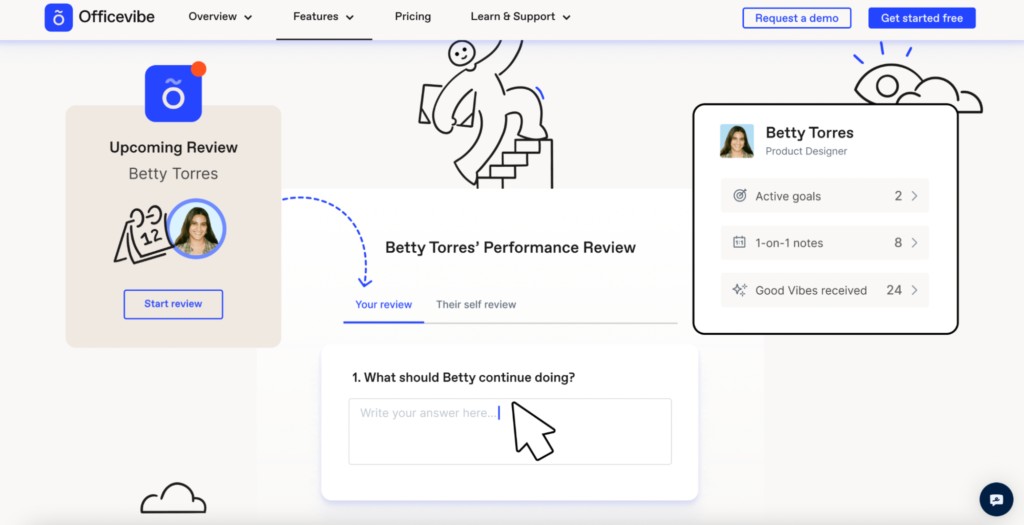Managing your remote workers effectively is crucial for maintaining productivity and fostering a connected team, and CONDUCT.EDU.VN is here to help. This guide provides actionable strategies and insights to navigate the challenges of remote work, from setting clear expectations to utilizing the right tools. Unlock a comprehensive understanding of remote team management and empower your workforce with essential guidelines and resources.
1. Understanding the Core Principles of Remote Work Management
Remote work presents unique challenges, but successful management hinges on a few fundamental principles. To foster a productive and engaged remote team, consider these key areas:
- Setting Clear Expectations: Define roles, responsibilities, and performance metrics explicitly.
- Creating Clear Communication Channels: Establish protocols for communication, including response times and preferred methods.
- Utilizing the Right Tools: Equip your team with the technology necessary for seamless collaboration and task management.
- Encouraging Collaboration and Culture-Building: Foster a sense of community through virtual team-building activities and open communication.
- Focusing on Employee Well-Being: Prioritize mental and physical health to prevent burnout and maintain morale.
- Prioritizing Training and Career Development: Offer opportunities for growth and skill enhancement to keep employees engaged and motivated.
By focusing on these core principles, you can cultivate a thriving remote work environment. Let CONDUCT.EDU.VN guide you in implementing these strategies effectively.
2. Implementing Effective Strategies for Managing Remote Teams
Effectively managing remote teams requires a proactive approach and a focus on clear communication, trust, and employee well-being. Here are key strategies to consider:
2.1. Establishing Clear Objectives and Expectations
Clear objectives are paramount in a remote setting. Define specific, measurable, achievable, relevant, and time-bound (SMART) goals for each team member. This ensures everyone understands their responsibilities and how their work contributes to the overall company objectives.
For example:
- A content writer might be tasked with producing two blog posts per week, each meeting specific SEO criteria.
- A software developer could be assigned to complete a set number of coding tasks within a sprint.
- A sales representative could have a quota of qualified leads to generate each month.
Remember, it’s not just about hitting targets, but also about understanding the challenges and supporting employees to avoid burnout. Use communication platforms, project management tools, and video conferencing to stay connected and ensure everyone is aligned.
2.2. Establishing Clear Communication Guidelines
Remote communication can be a hurdle if not managed effectively. Create a communication manifesto that outlines:
- Use Cases for Each Communication Tool: Specify which tool is appropriate for different types of communication (e.g., Slack for quick questions, email for formal updates, video calls for discussions).
- Appropriate Response Times: Set expectations for how quickly employees should respond to messages and emails.
- Task and Project Management Etiquette: Define protocols for updating tasks, providing feedback, and managing project timelines.
This ensures that communication is efficient, focused, and respectful of everyone’s time.
2.3. Utilizing Tools and Technologies for Managing Remote Employees
Equipping your remote team with the right tools is essential for productivity and collaboration. Consider these options:
- Google Workspace: A suite of tools including Gmail, Google Calendar, Docs, Sheets, and Slides for seamless collaboration and communication.
- Jira: A project management solution ideal for developers, marketers, and customer support teams, offering pre-made templates and integrations with other tools.
- Notion: A versatile workspace for note-taking, documentation, onboarding checklists, and other resources.
- Workleap Officevibe: An employee engagement tool that facilitates anonymous surveys, goal setting, and one-on-one meetings for feedback and career development.
2.4. Encouraging Team Collaboration and Culture-Building
Building a strong remote culture is crucial for fostering collaboration and increasing productivity. Consider these strategies:
- Utilize Virtual Team-Building: Organize virtual retreats, happy hours, and coffee chats to build camaraderie. Create dedicated channels on communication platforms for sharing personal interests and hobbies.
- Establish 360-Degree Feedback Loops: Allow employees to provide feedback on processes, workloads, and goal-setting to ensure they are engaged and focused on overall company objectives.
- Use Tools to Gauge Employee Mental Health: Implement surveys and people ops tools to provide an anonymous outlet for employees to share their concerns and feedback.
Remember, building trust and open communication is essential for a thriving remote culture. Micromanagement can erode trust and lead to high turnover.
2.5. Regularly Checking on Employee Well-Being
Monitoring employee well-being is critical in a remote setting. Implement strategies to check in on your team members without resorting to micromanagement.
Tools like Hubstaff can provide insights into employee activity levels and productivity without eroding trust.
With Hubstaff, managers can:
- Enable or disable screenshots and adjust their frequency.
- See, blur, or remove employee website and app usage.
- Gauge productivity with keyboard and mouse usage rates.
- Assess burnout with achievement badges for hours, activity hot streaks, and more.
- Balance utilization rates, meeting and focus time, and more with the Insights add-on.
2.6. Training and Development for Remote Employees
Managing remote teams is not just about tracking work hours; it’s about fostering a knowledgeable and motivated team.
- Champion Online Learning: Offer an in-house training platform featuring learning tools for content creation, section addition, virtual training, and tracking training effectiveness.
- Celebrate Success: Recognize and reward employees for their efforts.
It’s crucial to understand employees’ professional goals and interests and establish timelines and steps for acquiring the right skills.
2.7. Career Growth in a Remote Environment
Remote workers may feel limited in their career advancement opportunities due to less interaction with colleagues and management.
Address this in team meetings, invite colleagues to other projects, promote collaboration with different teams, and offer increased responsibilities and authority.
By implementing these strategies, you can create a supportive and productive remote work environment. For more guidance and resources, visit CONDUCT.EDU.VN.
3. Analyzing Real-World Examples of Successful Remote Management
Many companies are successfully navigating the challenges of remote work. Let’s explore some real-life examples:
3.1. Managing Remote Workers: Case Studies and Success Stories
Explore how these teams work remotely and the key lessons your business can glean from them.
3.1.1. Zapier
Zapier employs around 300 individuals across 20 countries, which makes time zone variations a challenge. The team plans meetings, deadlines, and communication meticulously. Weekly meetings cover project tasks and video call times, requiring creative solutions to manage time differences. Communication is facilitated through instant messaging on a centralized platform.
A key tip for managing remote employees across different time zones is to clarify the specifics of GMT or UTC.
3.1.2. Dell
Dell implemented a remote work program called Connected Workplace to enable the transition to remote work. This program seamlessly integrates remote and flexible work into the organization’s business strategy.
Management maintains flexible schedules to demonstrate confidence in team members’ self-organization ability. Dell’s effective remote work organization has earned them recognition as one of the world’s most ethical companies.
3.1.3. Close
The SaaS startup Close uses non-business tools like Snapchat to enhance communication within remote teams, aiming for a more personal touch. This allows employees to share enjoyable moments from their workday in a fun way, which improves team collaboration.
4. Assembling a Comprehensive Remote Worker Toolkit
The remote worker toolkit is a digital toolbox essential for staying productive and connected while working remotely. It includes:
- Communication Tools: Video conferencing and messaging applications.
- Project Management Software: Tools to track tasks and project progress.
- Cybersecurity Tools: VPN and endpoint security for online safety.
- Remote Access Technology: Solutions for accessing work systems and files.
- Hardware and Accessories: Company-provided laptops and ergonomic accessories.
- Remote Worker Training and Support Resources: Online training and IT support channels.
- Time Management Tools: Time tracking and productivity software.
- Wellness and Mental Health Support: Resources promoting work-life balance and stress management.
Additional essentials include Internet connectivity solutions, policy and guidelines documentation, clear guidelines on remote work expectations, virtual team-building activities, and feedback and performance evaluation tools.
5. Integrating Hubstaff for Streamlined Remote Team Management
Hubstaff is an all-in-one software used by remote workers to track time, gauge employee productivity, manage schedules, and automate payroll.
Key Hubstaff features include time tracking, employee timesheets, a daily stand-up tool, project cost management, online invoicing, and employee productivity software.
When used correctly, Hubstaff can provide end-to-end solutions, providing greater control over the team, allowing you to work remotely without hassle and keep everyone up to date.
6. Addressing Common Challenges in Remote Management
Remote work has its perks, but also its challenges.
6.1. Addressing Isolation and Lack of Engagement
Working from home can lead to feelings of isolation.
To cope with these feelings, try virtual hangouts, online parties, or group training sessions. Schedule midweek coffee breaks online and organize team-building activities for those who live nearby.
6.2. Navigating Time Zone Differences
Dealing with time zones can be tricky. Plan ahead for tasks and meetings, agree on one call in advance, and then stick to the schedule. Make a list of where your team members are based to help coordinate communication more smoothly.
7. Essential Tips for Success in Managing Remote Teams
To excel in managing remote teams, consider these essential tips:
-
Establish Clear Communication Channels: Implement tools like Slack, Microsoft Teams, or Google Meet to facilitate seamless communication.
- Slack: Ideal for quick questions, updates, and casual conversations.
- Microsoft Teams: Suitable for larger organizations with integrated communication and collaboration needs.
- Google Meet: Perfect for video conferencing and virtual meetings.
-
Document Processes and Workflows: Create detailed documentation for all processes to ensure clarity and consistency.
- Standard Operating Procedures (SOPs): Outline step-by-step instructions for common tasks.
- Project Management Documentation: Keep detailed records of project goals, timelines, and responsibilities.
-
Encourage Regular Feedback: Promote a culture of open communication with regular feedback sessions.
- One-on-One Meetings: Schedule regular meetings to discuss performance, challenges, and goals.
- Anonymous Surveys: Use surveys to gather honest feedback and identify areas for improvement.
-
Promote Work-Life Balance: Support employees in maintaining a healthy work-life balance to prevent burnout.
- Flexible Hours: Allow employees to adjust their work hours to accommodate personal needs.
- Wellness Programs: Offer resources and programs to support mental and physical health.
-
Provide the Right Tools: Equip your team with the necessary technology and resources to perform their jobs effectively.
- Project Management Software: Use tools like Asana, Trello, or Jira to manage tasks and deadlines.
- Collaboration Platforms: Implement platforms like Google Workspace or Microsoft 365 for seamless collaboration.
-
Recognize and Reward Achievements: Acknowledge and celebrate employee successes to boost morale and motivation.
- Public Recognition: Highlight achievements in team meetings or company newsletters.
- Incentive Programs: Offer bonuses, promotions, or other rewards for outstanding performance.
-
Set Clear Expectations: Define roles, responsibilities, and performance metrics explicitly to avoid confusion.
-
Prioritize Employee Well-Being: Foster a supportive environment that encourages open communication and addresses mental health concerns.
-
Create Opportunities for Social Interaction: Organize virtual team-building activities to foster camaraderie and connection.
-
Regularly Review and Adjust Strategies: Continuously evaluate the effectiveness of your remote management strategies and make adjustments as needed.
8. Addressing the Remote Work Paradox: Productivity vs. Engagement
The shift to remote work has presented businesses with a unique paradox: while productivity may increase, employee engagement often suffers.
- The Productivity Boost: Studies have shown that remote workers can be more productive due to fewer distractions and greater autonomy.
- The Engagement Challenge: However, isolation, lack of social interaction, and communication barriers can lead to disengagement.
To address this paradox, consider the following strategies:
- Invest in Communication Tools: Use tools that facilitate both formal and informal communication to keep employees connected.
- Foster a Culture of Recognition: Regularly acknowledge and reward employee achievements to boost morale.
- Provide Opportunities for Professional Development: Offer training and development programs to keep employees engaged and motivated.
- Prioritize Employee Well-Being: Promote work-life balance and offer resources to support mental and physical health.
By focusing on both productivity and engagement, you can create a thriving remote work environment. CONDUCT.EDU.VN provides additional resources and guidance on balancing these critical elements.
9. Answering Common Questions about Managing Remote Teams
Here are answers to frequently asked questions about managing remote teams.
9.1. What is remote work management?
Remote work management is the strategic coordination of tasks and teams when employees work from different locations. It also involves using tools and policies to maintain productivity and collaboration in a distributed work environment.
9.2. How do you manage remote workers without micromanaging?
Effectively managing remote workers without micromanaging requires building trust, establishing clear expectations, and providing the necessary tools for autonomy. Rather than consistently monitoring the process, the emphasis should be on results. Encourage employees to manage their tasks independently and support self-monitoring. It’s also helpful to avoid excessive and tedious regular meetings and reviews.
10. Conclusion: Embracing the Future of Remote Work
Organizing your team’s remote work can be simple. With the right approach and technologies, you can establish a seamless workflow where each team member feels valued and contributes significantly to the common goal.
It’s important to note that there’s no one-size-fits-all solution for managing leading remote employees. However, here’s what you can do:
- Build trust and transparency.
- Set clear goals and expectations.
- Provide the right tools for communicating with the team by determining communication preferences in advance.
- Manage time zone differences effectively.
- Avoid micromanagement and excessive control.
- Communicate regularly with your team.
- Address common remote work challenges many employees face.
- Provide ongoing learning opportunities for employees.
- Gain insights from others’ experiences.
Understanding the nuances of remote work, recognizing its business potential, and then implementing effective strategies can bring significant benefits to your organization and company culture.
For reliable software to manage your remote workforce and to learn more about best practices in remote work management, contact conduct.edu.vn today at 100 Ethics Plaza, Guideline City, CA 90210, United States or Whatsapp: +1 (707) 555-1234.


